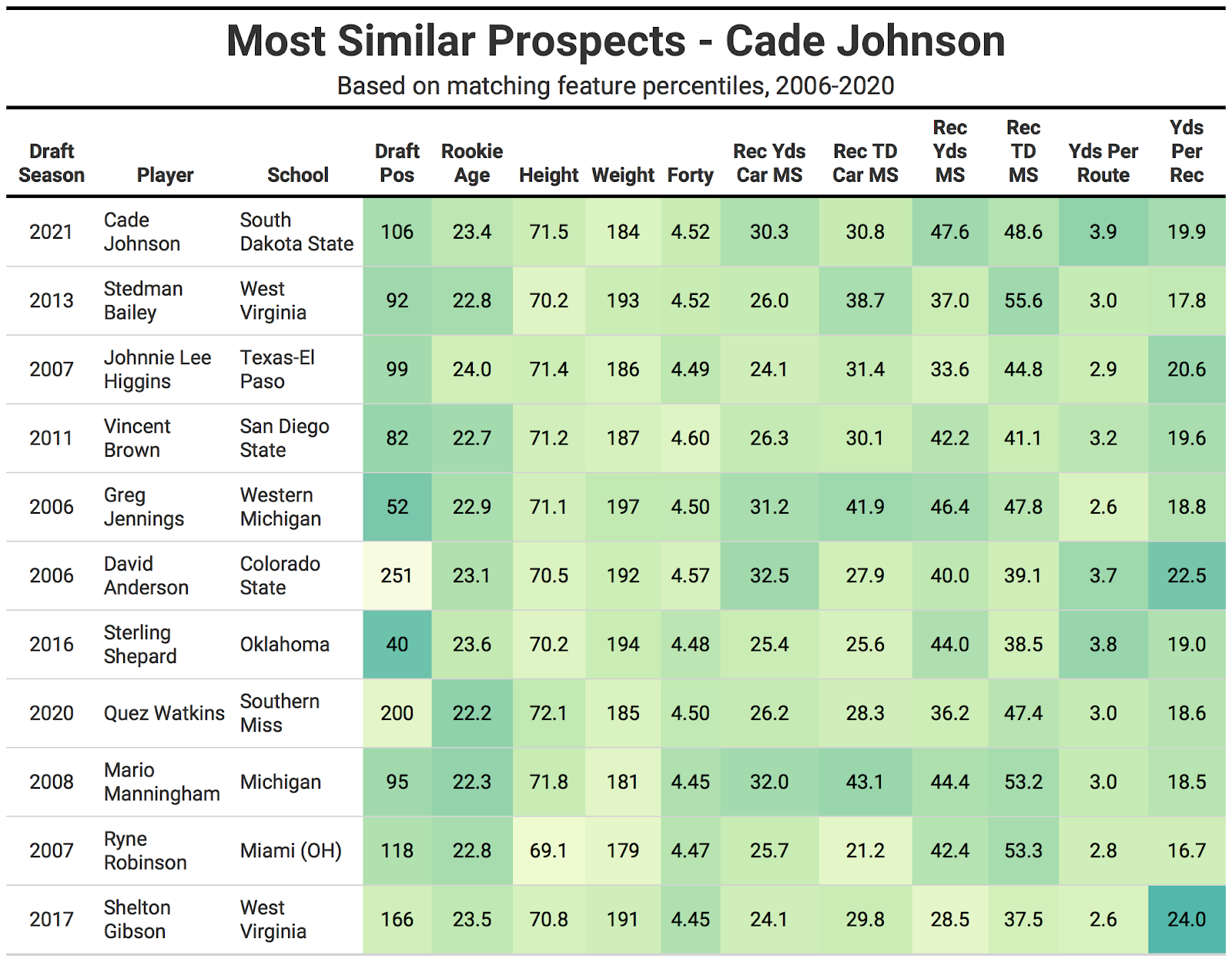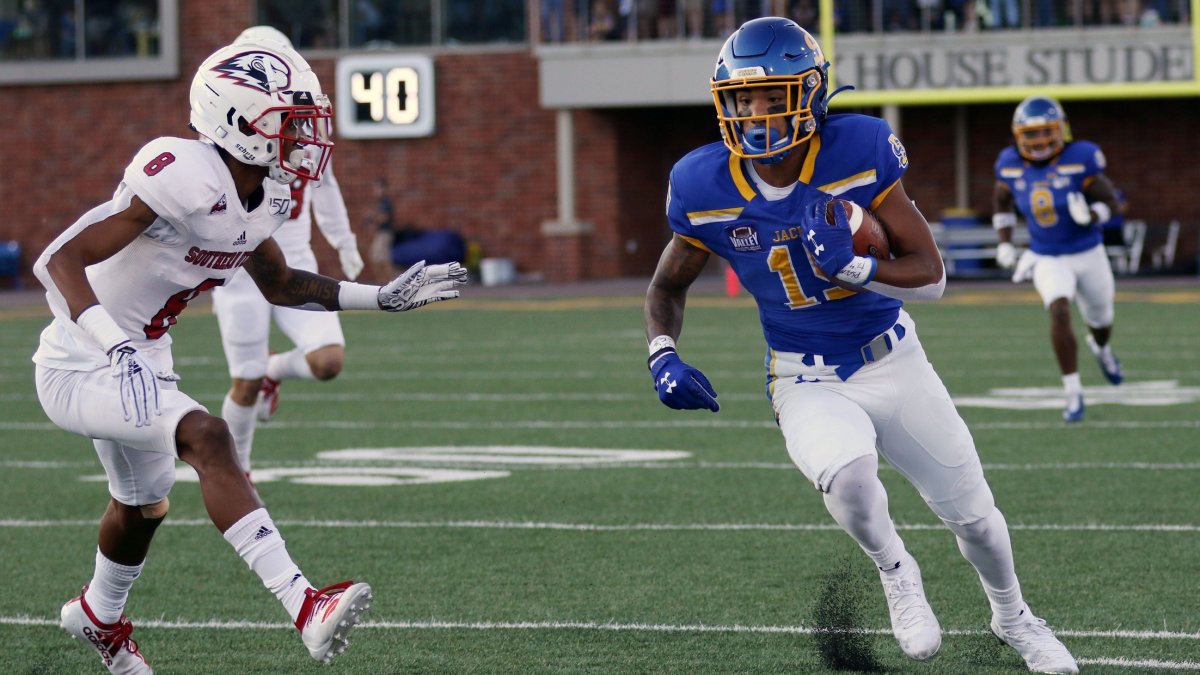Comparing current NFL draft prospects to those of years past is standard procedure in draft evaluation, though most comparisons are built on the memory recall and subjective opinion of the particular evaluator.
This will be the first in a series of articles comparing the 2021 draft prospects to prior years and picking out the most similar comps with a clearly delineated and quantifiable method.
PFF data scientist Eric Eager has done tremendous work building college-to-pro projections, which are built off the robust college data we’ve collected since 2014 and have been applied to exercises like building an “Analytics” Mock. In this analysis, I will use some of our advanced stats for comparison but primarily rely on traditional stats to go back further to compare the 2021 prospects to draft classes going back to 2006.
Without the NFL Scouting Combine this season, the important measurables like weight and 40-yard dash will be reported through the various pro days that will be taking place over the next few weeks.
View PFF's 2021 NFL Draft position rankings:
QB | RB | WR | TE | T | iOL | DI | EDGE | LB | CB | S
METHODOLOGY
The comps below were derived from a two-step process. First, I converted all the most statistically relevant stats and measurables to percentiles based on the thousands of prospects who have entered the NFL since 2006 at each position. Then, I filtered the total universe of past prospects by those who had draft positions, weight and 40 times within a 10th percentile in either direction of South Dakota State RB Cade Johnson. For undrafted players, I assigned a numerical draft position of 300.
The rest of the matching features were transformed by principal component analysis (PCA). I found the closest statistically comparable players by the euclidean distance between the players' principle components, listed in the top 10 below.
The metrics for PCA are career market shares for receiving yards and receiving touchdowns, best-season market shares for receiving yards and touchdowns, yards per route run, and yards per reception.
For Johnson's draft position, I’m using an estimate based on the mock data collected at GrindingTheMocks.com. For the weight and 40 time, I’m using the numbers from his pro day, with a 0.03-second penalty added to the 40 time to reflect the uncertainty of pro-day timed measurements.
Most comparable players
Johnson didn’t test particularly well at his pro day, clocking in at 4.49 seconds on the 40-yard dash at only 184 pounds. His performance in the explosion drills was more disappointing, hitting 9-foot-6 on the broad jump (9th percentile) and 35 inches for the vertical (41st).
Johnson garnered heaps of praise for his performance during the Senior Bowl drills and practices, which was more important for a small-school prospect with question marks on how he’d stack up against higher-end competitors. The South Dakota State product earned the highest PFF grade of any receiver in the one-on-ones at the Senior Bowl.
One small-schooler that stepped up on big stage at 2021 Senior Bowl was @GoJacksFB WR Cade Johnson (@cade_johnson). Shook rust off quickly and consistently got open. Made one of catches of the week and made big play as gunner on punt team in the game. 💰#TheDraftStartsInMobile pic.twitter.com/Q4ChkVzV6a
— Jim Nagy (@JimNagy_SB) February 11, 2021

While Johnson isn’t a strong athlete, his market-share production and efficiency numbers were elite. We should view those numbers through a negative lens after accounting for Johnson’s older age (redshirted his true freshman year) and the level of competition playing for an FCS school.
Exclusive content for premium subscribers

WANT TO KEEP READING?
Dominate Fantasy Football & Betting with AI-Powered Data & Tools Trusted By All 32 Teams
Already have a subscription? Log in




 © 2025 PFF - all rights reserved.
© 2025 PFF - all rights reserved.